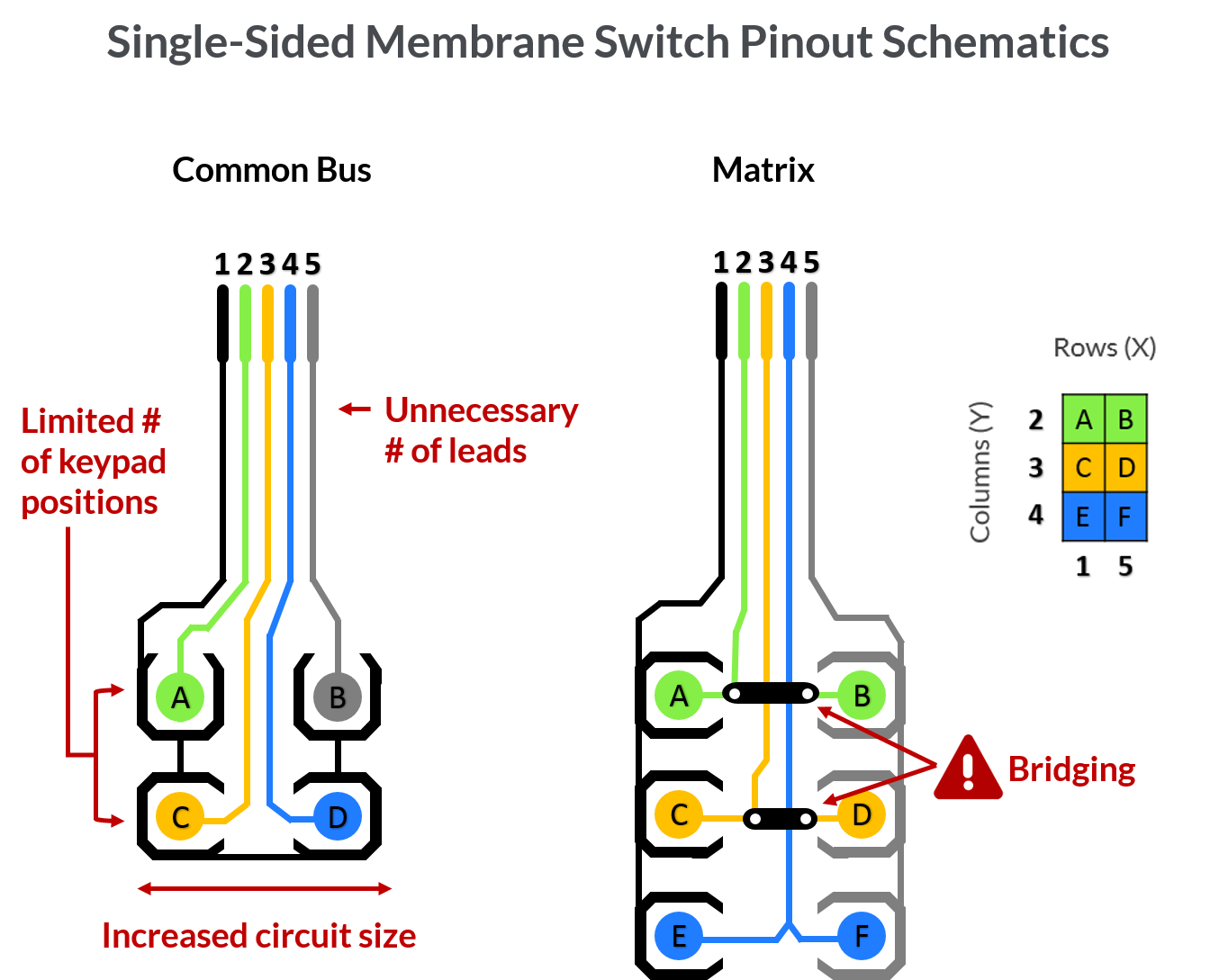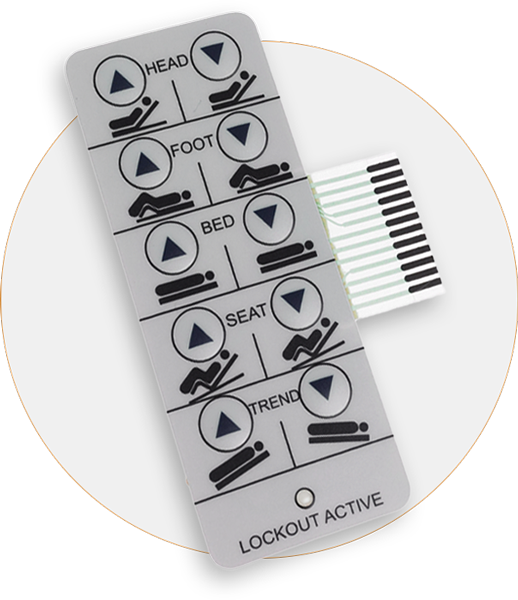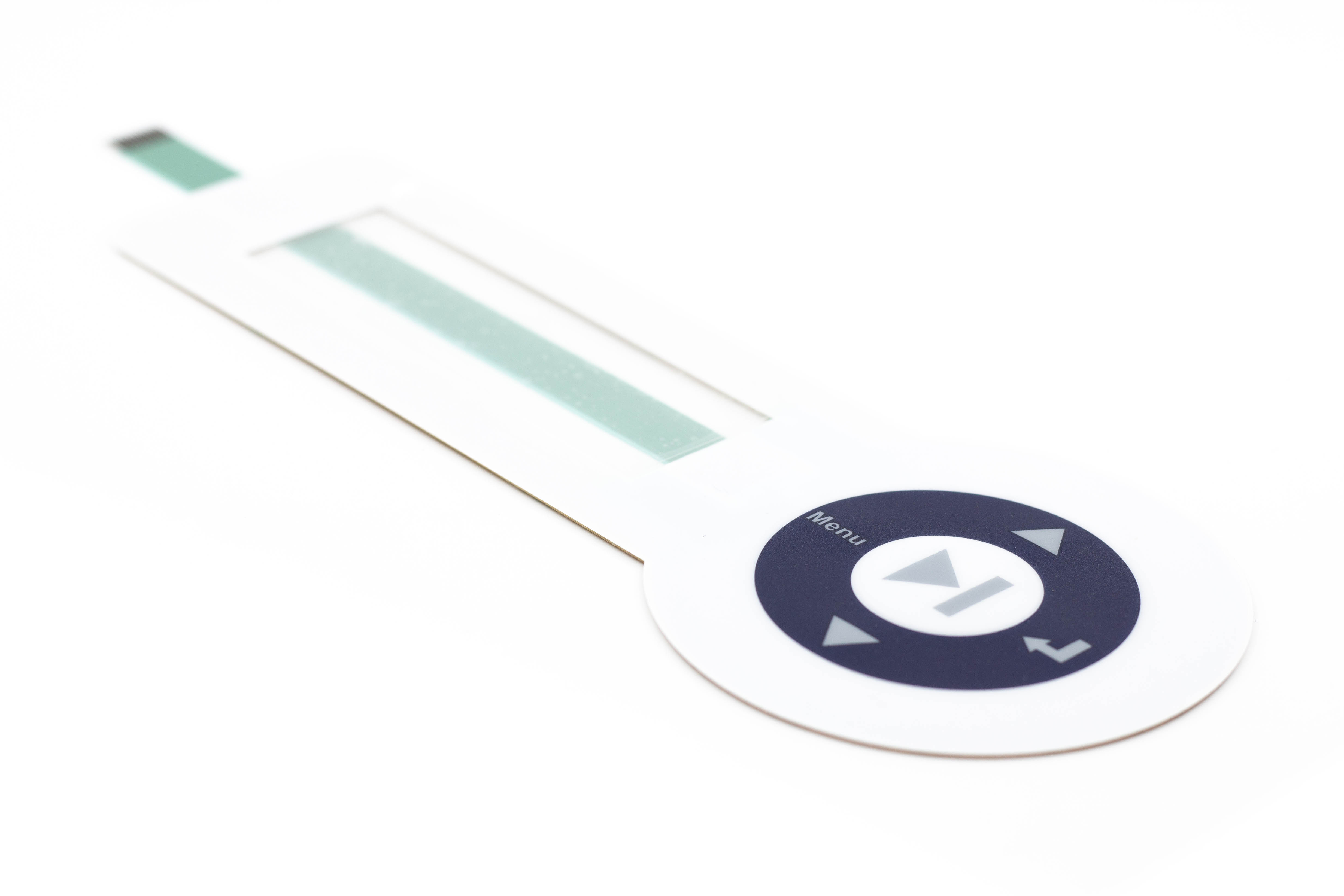Explore Different Kinds Of Membrane Switch Technologies for Your Demands
Explore Different Kinds Of Membrane Switch Technologies for Your Demands
Blog Article
Recognizing the Capability of Membrane Switches for Interface Instruments
The performance of membrane layer switches represents a considerable improvement in user interface layout, incorporating effectiveness with aesthetic adaptability. These switches run via a multi-layered structure that converts customer communications into electric signals, permitting both small designs and strength versus ecological variables. As sectors increasingly prioritize customer experience, comprehending the nuances of membrane layer button technology becomes vital. What effects do these improvements hold for future applications, and how might they redefine individual interactions across numerous devices?
What Are Membrane Switches?
Membrane switches are cutting-edge user interface devices that assist in individual interaction with electronic tools. These functional elements include multiple layers, consisting of a graphic overlay, spacer, and a published circuit layer. The style permits for a smooth combination right into different digital tools, boosting both the visual and practical elements of interface.
Membrane buttons are frequently employed in a vast array of applications, from household appliances to commercial machinery and clinical gadgets. Their building and construction commonly includes a thin profile, making them a suitable selection for small designs. The responsive responses supplied by these switches can be crafted to fulfill certain individual preferences, making sure efficient communication in between the customer and the device.
Sturdiness is another substantial benefit of membrane layer switches, as they are immune to dirt, moisture, and chemicals, which enhances their life-span popular environments. Furthermore, these switches can be customized in regards to shape, size, and visuals style, permitting branding and user-specific features. Generally, membrane layer changes stand for a functional solution for improving customer experience in digital devices, combining performance with aesthetic allure in an effective manner.
Exactly How Membrane Changes Job
Operating on a straightforward principle, membrane layer switches use a split construction to register customer input effectively. Each switch is composed of several layers, including a published circuit layer, a spacer layer, and a top visuals layer, which are developed to interact flawlessly. When a user presses the top layer, it compresses the spacer layer, bringing the conductive elements of the circuit layer right into contact with each other.
This call develops a closed circuit, indicating the tool to perform a specific feature. The style enables for different setups, consisting of responsive comments, which can improve the individual experience by offering a physical sensation upon activation. The materials used in membrane buttons typically consist of flexible substratums, such as polyester or polycarbonate, which guarantee toughness and durability versus deterioration.

Trick Benefits of Membrane Switches

An additional considerable advantage is their density. Membrane layer switches get more are slim and light-weight, which enables suppliers to save room in their devices without giving up capability. This feature is particularly beneficial in applications where weight and quantity are vital considerations.
Additionally, membrane layer switches are immune to dirt, moisture, and chemicals, boosting their toughness. This durability expands their lifespan and decreases the demand for frequent replacements, resulting in expense savings gradually.
Moreover, the tactile feedback provided by membrane switches can be enhanced to boost customer interaction. They can include attributes such as raised buttons or distinct clicks, boosting usability and user experience.
Applications Throughout Industries
Customer interface devices making use of Learn More Here membrane layer buttons prevail in a large selection of industries, showcasing their versatility and capability. Membrane Switch. In the clinical industry, membrane layer buttons are indispensable to gadgets such as diagnostic equipment and individual surveillance systems, where their durability and ease of cleaning are vital for keeping health standards. Similarly, in the auto sector, these buttons are used in dashboard controls and infotainment systems, providing a sleek and modern-day user interface for individuals.
Additionally, the customer electronics industry take advantage of membrane layer buttons in home appliances and handheld devices, where compact layout and straightforward user interfaces enhance user experience. Industrial applications also leverage membrane switches for control panels in equipment and automation systems, stressing their toughness and resistance to rough settings.
In the aerospace and defense sectors, membrane layer buttons are made use of in cabin controls and equipment, where integrity and performance under extreme here problems are extremely important. Furthermore, the video gaming industry significantly incorporates membrane layer buttons in controllers and game devices, adding to an interesting customer experience. Overall, the adaptability of membrane changes allows their extensive use throughout many sectors, emphasizing their significance in modern interface style.
Future Trends in Membrane Switch Over Innovation

Furthermore, using sophisticated products, such as polycarbonate and polyester movies, is anticipated to rise, providing boosted sturdiness and resistance to ecological stressors. These products add to the total longevity of membrane switches, making them appropriate for harsher commercial applications.
In addition, the incorporation of wise technology, consisting of IoT connection, will make it possible for membrane layer buttons to connect with various other tools and systems, promoting a more interactive user experience. This trend lines up with the growing demand for wise tools across different sectors, from health care to customer electronic devices.
Last but not least, customization options are prepared for to expand, enabling producers to produce bespoke options tailored to particular customer requirements and preferences. These developments will position membrane switches as essential elements in the advancement of interface innovation.
Final Thought
To conclude, membrane layer switches stand for a critical development in customer interface innovation, providing a trusted and versatile option for varied electronic applications. Their split construction facilitates compact layout, while attributes such as tactile responses improve customer communication. The durability against environmental factors additionally strengthens their utility throughout multiple sectors. As developments in product scientific research and touch picking up modern technologies continue, the performance and applicability of membrane layer switches are anticipated to increase, strengthening their significance in modern-day electronic gadgets.
Report this page